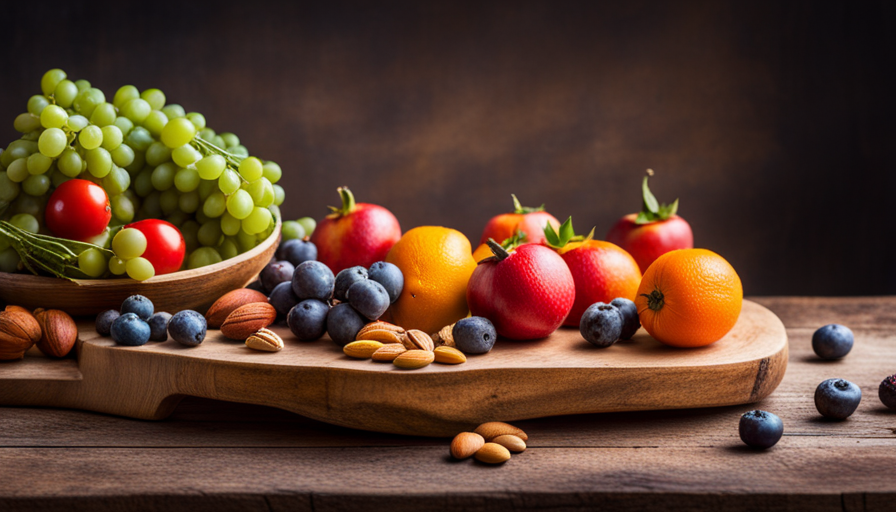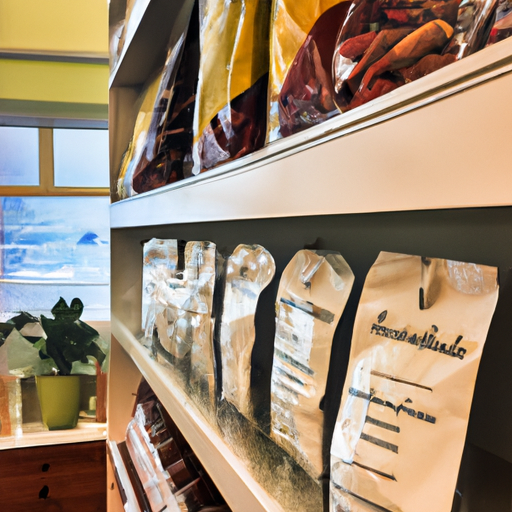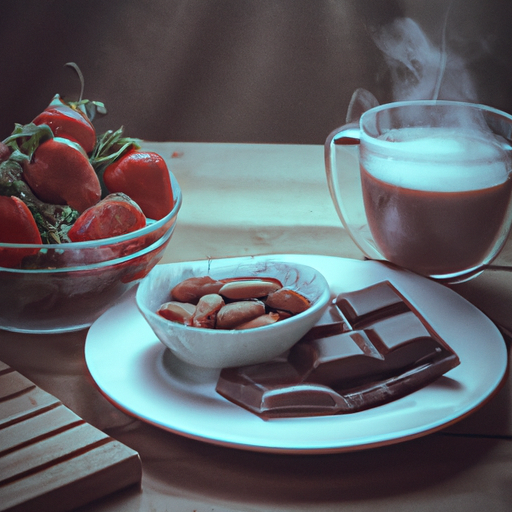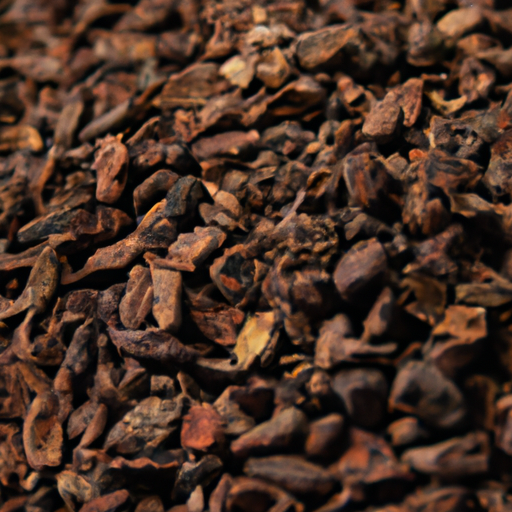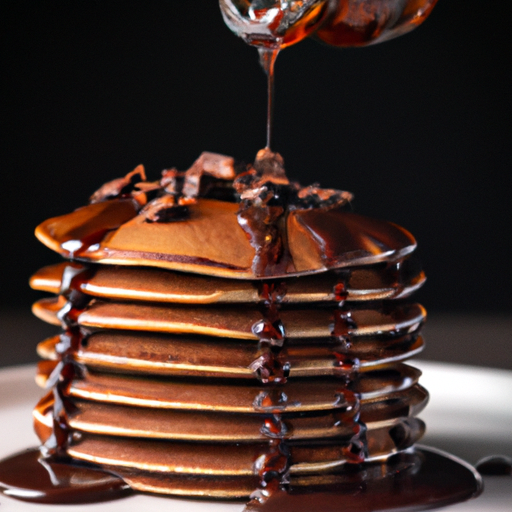Have you ever thought about how to indulge your chocolate cravings in a more wholesome manner? Well, look no further because I’m excited to share a special recipe that will change the way you enjoy chocolate. Get ready to discover how to create your own raw chocolate using cacao nibs. That’s right – indulgent chocolate that is both tasty and nutritious. It’s time to say goodbye to the store-bought bars full of chemicals and embrace the joy of crafting your own luxurious treat.
In this article, I will guide you through the step-by-step process of making raw chocolate with cacao nibs. We’ll start by gathering the essential ingredients and move on to roasting and grinding the cacao nibs to achieve that rich, velvety texture. Then, we’ll melt the cacao butter and mix in the perfect amount of sweetener to strike the right balance. If you’re feeling adventurous, we’ll even explore optional add-ins to customize your chocolate creation.
So, get ready to impress yourself and your loved ones with homemade raw chocolate that will leave you craving for more.
Key Takeaways
- Molding techniques: Pour mixture into desired molds, use clean and dry molds, tap molds to remove air bubbles.
- Cooling and setting time: Let it set in the refrigerator for at least two hours, cooling and setting time varies depending on recipe and temperature, rushing the cooling process may result in undesirable texture, patience is crucial for achieving desired texture.
- Alternative ingredients: Get creative with alternative ingredients, alternative sweeteners infuse distinct flavors, sea salt enhances richness, almond extract adds nutty flavor.
- Serving and decorating: Serve homemade raw chocolate in small molds or trays, add sea salt or crushed nuts for texture and flavor, pair raw chocolate with fresh raspberries or sea salt, decorate chocolate with edible flowers, crushed nuts, edible glitter, shredded coconut, or dried fruit.
Gather Your Ingredients
Now that you’ve got your cacao nibs ready, it’s time to gather the rest of your ingredients and get ready to make some delicious raw chocolate!
To ensure the best flavor and texture, it is important to choose high-quality ingredients. Start by selecting the type of sweetener you prefer for your chocolate. Options include natural sweeteners like maple syrup, honey, or coconut sugar, or you can use a sugar substitute like stevia or erythritol. The choice of sweetener will depend on your personal taste and dietary preferences.
Additionally, consider experimenting with different roasting techniques for the cacao nibs before grinding them. Some popular methods include light roasting for a milder flavor or dark roasting for a more intense, robust taste.
With your ingredients gathered, it’s time to move on to the next step and roast and grind the cacao nibs to perfection.
Roast and Grind the Cacao Nibs
In this section, I will discuss the roasting and grinding processes involved in making raw chocolate with cacao nibs.
The roasting process is crucial as it helps to develop the flavors and aroma of the cacao nibs. It involves heating the nibs at a specific temperature for a certain amount of time, which enhances their natural characteristics.
Once the nibs are roasted, they need to be ground into a fine powder. This grinding process is essential to break down the nibs into smaller particles, allowing the cocoa butter to be released and creating a smooth texture in the final chocolate product.
Roasting process
First, you’ll want to pop those delicious cacao nibs in the oven and let them roast to perfection. Roasting techniques play a crucial role in developing the rich flavors of raw chocolate.
The time and temperature you choose will greatly influence the end result. For a more delicate flavor, roast the nibs at a lower temperature, around 250°F (120°C), for about 10-15 minutes. If you prefer a bolder, more intense flavor, opt for a higher temperature, around 300°F (150°C), for 15-20 minutes.
Experimenting with different roasting times and temperatures can yield exciting flavor variations in your final product.
Once the nibs are roasted to your desired level, we can move on to the grinding process, where we’ll transform them into a smooth, silky chocolate paste.
Grinding process
Once the roasted nibs have undergone the grinding process, their transformation into a smooth and silky chocolate paste is nothing short of magical. Grinding techniques play a crucial role in achieving the desired texture and consistency of the chocolate.
The most common method is to use a high-speed blender or a food processor. This involves adding the roasted nibs to the machine and pulsing them until they break down into a fine powder.
Another alternative grinding method is to use a stone grinder, which slowly grinds the nibs to create a smoother and creamier texture. Regardless of the method used, the goal is to grind the nibs until they reach a liquid-like consistency, resembling melted chocolate.
This brings us to the next step: melting the cacao butter to incorporate into the chocolate paste.
Melt the Cacao Butter
To make raw chocolate with cacao nibs, it’s important to understand the role of cacao butter and the melting process.
Cacao butter is the fat extracted from cacao beans. It’s a crucial ingredient in chocolate making because of its smooth texture and its ability to solidify at room temperature.
The melting process involves gently heating the cacao butter until it reaches its melting point, usually around 90°F. This ensures that it’s in a liquid state and ready for further use in chocolate making.
Importance of cacao butter
One crucial ingredient you don’t want to overlook in your homemade raw chocolate is the rich and creamy cacao butter. It is not just a flavor enhancer but also offers several benefits for your skin. Here are five ways cacao butter can be beneficial for your skincare routine:
-
Hydration: Cacao butter is a natural moisturizer that deeply hydrates your skin, leaving it soft and supple.
-
Anti-aging: It contains antioxidants that help combat free radicals and reduce the signs of aging, such as fine lines and wrinkles.
-
Healing properties: Cacao butter has healing properties that can soothe and repair damaged skin, including scars and stretch marks.
-
Sun protection: It has a natural SPF, providing some protection against harmful UV rays.
-
Hair care: Cacao butter can be used to nourish and condition your hair, making it shiny and lustrous.
In addition to skincare, cacao butter can be incorporated into various recipes to add a rich and velvety texture. Now that you understand the importance of cacao butter, let’s move on to the melting process.
Melting process
After understanding the importance of cacao butter in making raw chocolate, let’s move on to the next step: the melting process. This is a crucial step as it determines the final texture and consistency of your chocolate. To melt the cacao butter and turn it into liquid form, I recommend using a double boiler. This method ensures gentle and even heat distribution, preventing the cacao butter from burning or becoming grainy. Simply place a heat-resistant bowl on top of a pot of simmering water, making sure the bottom of the bowl doesn’t touch the water. Add the cacao butter and stir occasionally until fully melted. Once the cacao butter is melted, it’s time to incorporate alternative sweeteners into the mixture. This step will add the perfect amount of sweetness to your homemade raw chocolate.
Mix in the Sweetener
Now that you’re ready to sweeten your raw chocolate, it’s time to mix in your preferred sweetener and enhance the rich flavors of the cacao nibs. This will create a delectable treat that satisfies your sweet tooth.
When choosing a sweetener, you have a variety of options to explore. Popular choices include raw honey, maple syrup, coconut sugar, or agave nectar. Consider your desired sweetness level and taste preferences when selecting your sweetener.
Start by adding a small amount of sweetener and gradually increase until you reach your desired taste. Remember, you can always add more sweetener, but it’s difficult to remove sweetness once it’s added.
Once you’ve mixed in your sweetener, you can move on to the next section about adding in your optional add-ins, such as nuts, dried fruits, or vanilla extract.
Add in Your Optional Add-Ins
Enhance the already delightful flavors of your sweetened raw chocolate by adding in a variety of optional add-ins. Here are some discussion ideas to inspire your creativity:
-
Flavor combinations: Experiment with different combinations of add-ins to create unique flavor profiles. Try mixing in almonds and dried cherries for a classic chocolate cherry flavor, or add shredded coconut and macadamia nuts for a tropical twist.
-
Health benefits of cacao nibs: Cacao nibs not only add a rich, chocolatey taste to your raw chocolate, but they also offer numerous health benefits. They are packed with antioxidants, fiber, and minerals such as magnesium and iron. Additionally, cacao nibs can boost your mood and improve cognitive function.
Now that you have added your optional add-ins, it’s time to pour the mixture into molds and let it set.
Pour the Mixture into Molds
First, pour the mixture into your desired molds, allowing it to take shape and solidify into delectable treats.
When it comes to molding techniques, there are a few options to consider. Silicone molds are a popular choice due to their flexibility and easy release. You can also use ice cube trays or even a baking dish lined with parchment paper.
Whatever you choose, make sure it’s clean and dry before pouring in the mixture. If you want to get creative, try adding in some alternative ingredients like chopped nuts, dried fruits, or even a sprinkle of sea salt for that perfect balance of flavors.
Once the molds are filled, gently tap them on the counter to remove any air bubbles.
Now, let it set in the refrigerator for at least two hours before moving on to the next step of letting it set completely.
Let it Set
After pouring the mixture into the molds, it’s crucial to let it set properly. The cooling and setting time will vary depending on the recipe and the temperature of the environment.
It’s important to exercise patience during this step as rushing the process can result in a chocolate that isn’t properly set and may not have the desired texture.
Cooling and setting time
Once the mixture is smooth and well combined, it’s time to let it cool and set, allowing the flavors to develop and intensify.
The cooling process is crucial as it helps the raw chocolate reach its desired consistency. There are various cooling techniques you can use to expedite this process, such as placing the mixture in the refrigerator or freezer. Another option is to pour the mixture into silicone molds and let it cool at room temperature.
While the chocolate cools, the alternative sweeteners, like maple syrup or honey, will infuse their distinct flavors, enhancing the overall taste.
It’s important to exercise patience during this stage, as rushing the cooling and setting time may result in a texture that is too soft or brittle. So, take your time and allow the chocolate to cool and set properly before moving on to the next section, where we will discuss the importance of patience in the final steps of making raw chocolate.
Importance of patience
While waiting for the mixture to cool and set, it’s crucial to exercise patience and allow the flavors to fully develop, resulting in a delectable treat. The importance of patience when making raw chocolate cannot be overstated. Taking your time has numerous benefits and directly affects the final result.
Patience plays a vital role in achieving the desired texture of the chocolate. Rushing the process can negatively impact the taste, as the flavors need time to meld and harmonize.
Patience also fosters mindfulness in chocolate making, allowing you to fully engage with the process and appreciate each step. The connection between patience and the overall enjoyment of the process is evident, as taking the time to savor each moment enhances the experience.
Furthermore, patience is crucial in developing unique flavor profiles and allows for creativity in customizing recipes. The impact of patience extends beyond the process itself, as it contributes to the overall satisfaction of making homemade raw chocolate.
So, with patience, enjoy your homemade raw chocolate!
Enjoy Your Homemade Raw Chocolate!
When it comes to serving your homemade raw chocolate, there are a few suggestions to keep in mind.
- First, consider using small silicone molds or ice cube trays to create bite-sized pieces for easy portion control.
- Additionally, you can sprinkle some sea salt or crushed nuts on top of the chocolate to add texture and flavor.
As for storage, it’s important to keep your raw chocolate in an airtight container in a cool, dry place to prevent it from melting or becoming too soft.
Enjoy your homemade raw chocolate!
Serving suggestions
To add a delightful twist to your raw chocolate creation, try pairing it with fresh raspberries or a sprinkle of sea salt. These combinations will elevate the flavor profile of your homemade chocolate and add a burst of freshness or a savory touch. Additionally, you can get creative with different types of sweeteners to enhance the sweetness of the chocolate. Maple syrup, honey, or coconut sugar are great options to experiment with. When it comes to decorating the chocolate, let your imagination run wild. You can use edible flowers, crushed nuts, or even edible glitter to make your raw chocolate visually appealing. To give you some inspiration, here’s a table showcasing creative ways to decorate your chocolate:
Decorating Ideas:
- Edible flowers
- Crushed nuts
- Edible glitter
- Shredded coconut
- Dried fruit
Now that you have learned some exciting serving suggestions, let’s move on to storage tips for your delicious raw chocolate creation.
Storage tips
When it comes to serving suggestions, I’ve covered various ideas on how to enjoy your homemade raw chocolate with cacao nibs. Now, let’s talk about storage tips to ensure your chocolate stays fresh and delicious in the long term.
Proper storage is crucial to maintain the quality and taste of your homemade chocolate. Here are the best containers for storing raw chocolate:
- Airtight glass jars: Glass jars with airtight seals are ideal for preserving the freshness of your chocolate.
- Silicone molds: Silicone molds are not only great for making chocolate, but they also serve as excellent storage containers.
- Vacuum-sealed bags: Vacuum-sealed bags help remove excess air, preventing oxidation and maintaining the chocolate’s quality.
- Tin containers: Tin containers are a classic choice for storing chocolate, as they offer protection from light and moisture.
- Dark and cool place: Store your chocolate in a dark and cool place, away from direct sunlight and heat sources.
Now that you know how to store your chocolate properly, let’s move on to the next section about how to experiment and customize your raw chocolate creation.
Experiment and Customize
Experiment and customize your raw chocolate by adding different flavors such as sea salt, almond extract, or dried fruits to create a unique and personalized treat. For example, you can mix in a handful of chopped dried cherries and a pinch of cinnamon to give your raw chocolate a deliciously fruity and spicy twist.
| Flavors | Benefits |
|---|---|
| Sea Salt | Enhances richness |
| Almond Extract | Adds nutty flavor |
| Dried Fruits | Adds natural sweetness |
The experimentation benefits of customizing your raw chocolate are endless. By adding various flavors, you can cater to your taste preferences and create a truly one-of-a-kind treat. Furthermore, customization allows you to adjust the intensity of flavors, ensuring that your raw chocolate is exactly as you desire. Whether you prefer a hint of sea salt or a burst of fruity sweetness, the choice is yours. So go ahead and get creative with your raw chocolate by experimenting with different flavors and personalization options.
Frequently Asked Questions
How long does it take for the mixture to set in the molds?
The setting time for the mixture in the molds varies depending on the ingredients used and the desired texture. However, using alternative sweeteners may extend the setting time slightly due to their different properties.
Can I use a different sweetener instead of the recommended one?
Yes, you can use alternative sweeteners in place of the recommended one. Some options include honey, maple syrup, or coconut sugar. However, it’s important to consider their health benefits and choose one that aligns with your dietary needs.
Are there any specific brands of cacao nibs and cacao butter that you recommend?
I recommend brands like Navitas Organics and Terrasoul for cacao nibs and cacao butter. If you prefer an alternative to the recommended sweetener, you can try using maple syrup or coconut sugar.
Can I add nuts or dried fruits as optional add-ins?
Adding nuts or dried fruits to raw chocolate can enhance the flavor and texture. They serve as delightful add-ins and can be substituted for recommended sweeteners. However, be cautious with the proportions to maintain the desired consistency.
How should I store the homemade raw chocolate to ensure it stays fresh?
To ensure the freshness of homemade raw chocolate, store it in an airtight container in a cool, dry place. This will help extend its shelf life. Avoid exposing it to heat or moisture, as it can cause the chocolate to spoil.
Can I Use Raw Cacao Nibs to Make Raw Chocolate?
If you’re wondering about the process of making raw chocolate using raw cacao nibs, this eating raw cacao nibs tutorial will help you out. Raw cacao nibs can be used to make delicious and healthy raw chocolate. Simply blend the nibs with your choice of sweetener and any additional flavorings, then enjoy your homemade treat.
Conclusion
In conclusion, making raw chocolate with cacao nibs is a simple and rewarding process. Here’s how you can do it:
-
Start by carefully roasting and grinding the cacao nibs. This will bring out their rich flavor and aroma.
-
Next, melt the cacao butter in a double boiler or a microwave. This will give your raw chocolate a smooth and creamy texture.
-
Once the cacao butter is melted, add in your preferred sweetener. You can use natural sweeteners like maple syrup, honey, or coconut sugar. Adjust the amount to suit your taste.
-
If you like, you can also add in some optional add-ins to enhance the flavor of your raw chocolate. Some popular choices include vanilla extract, sea salt, nuts, or dried fruits.
-
Stir the mixture well until everything is fully combined and smooth.
-
Pour the mixture into chocolate molds or onto a lined baking sheet.
-
Place the molds or baking sheet in the refrigerator or freezer to allow the raw chocolate to set. This usually takes about 1-2 hours.
-
Once the raw chocolate is set, remove it from the molds or break it into smaller pieces if using a baking sheet.
-
Now, you can indulge in the rich and heavenly flavors of your homemade raw chocolate. Enjoy it as is or use it in your favorite recipes.
So go ahead, unleash your creativity and enjoy the deliciousness of your homemade raw chocolate.


